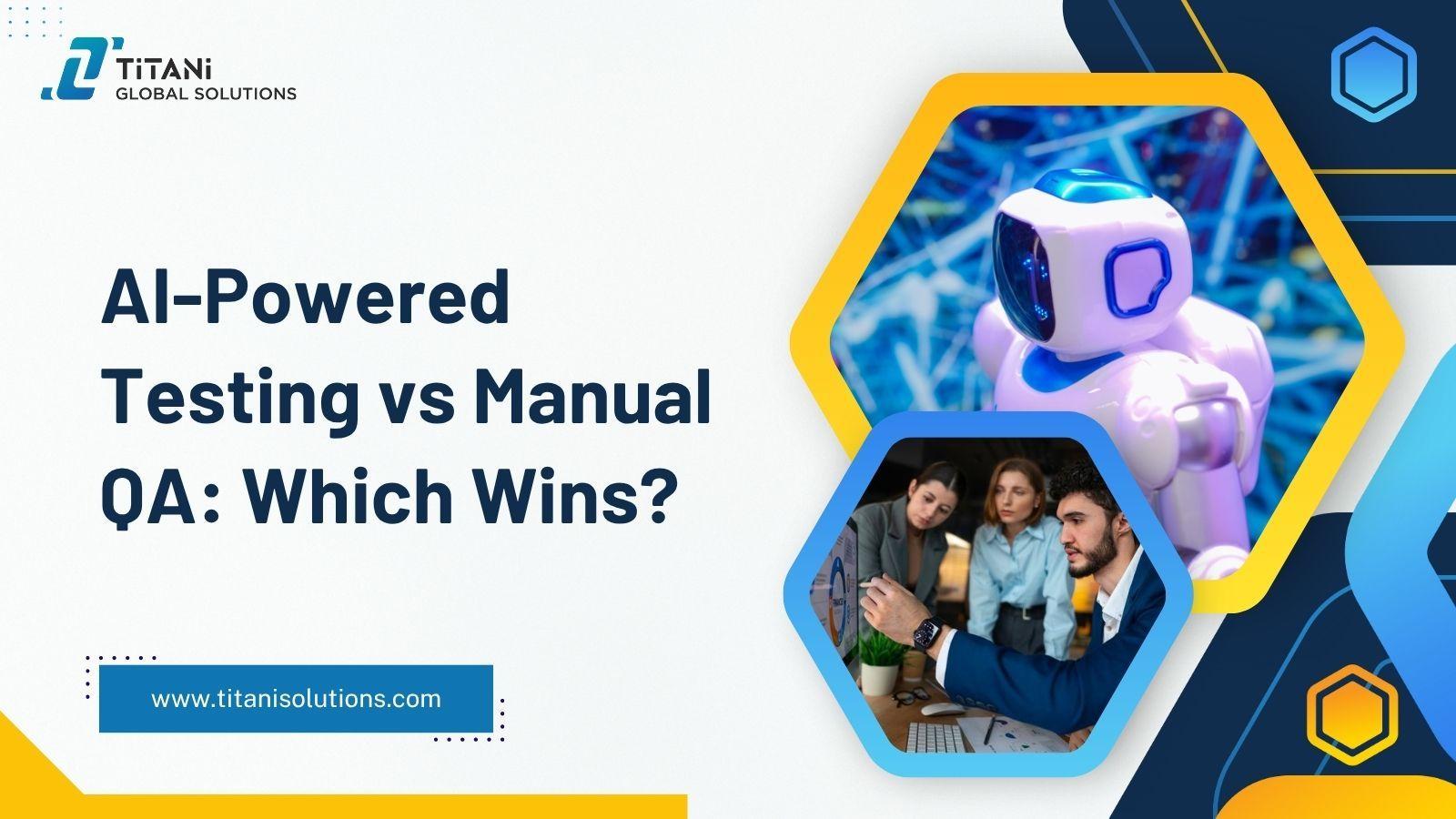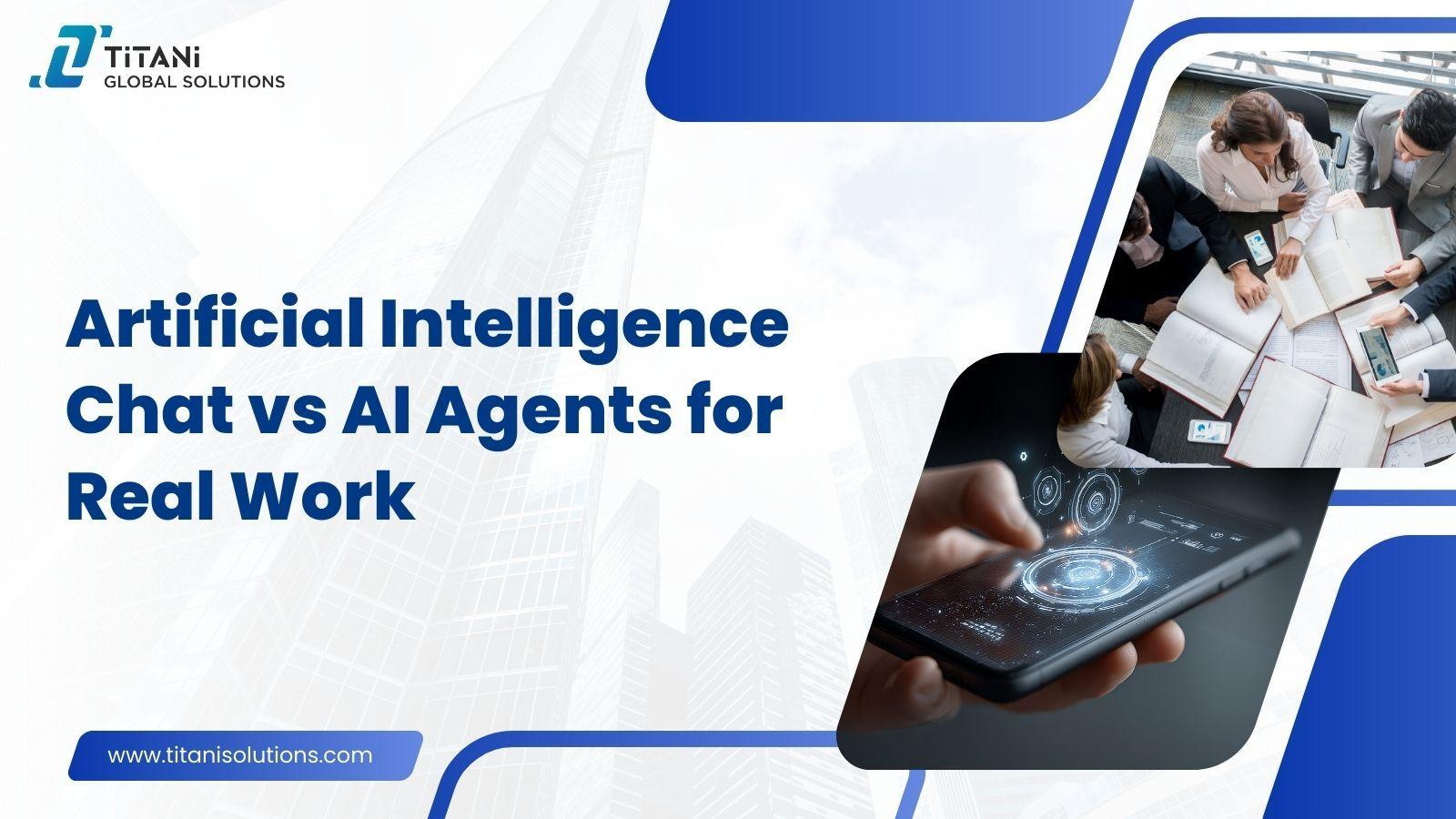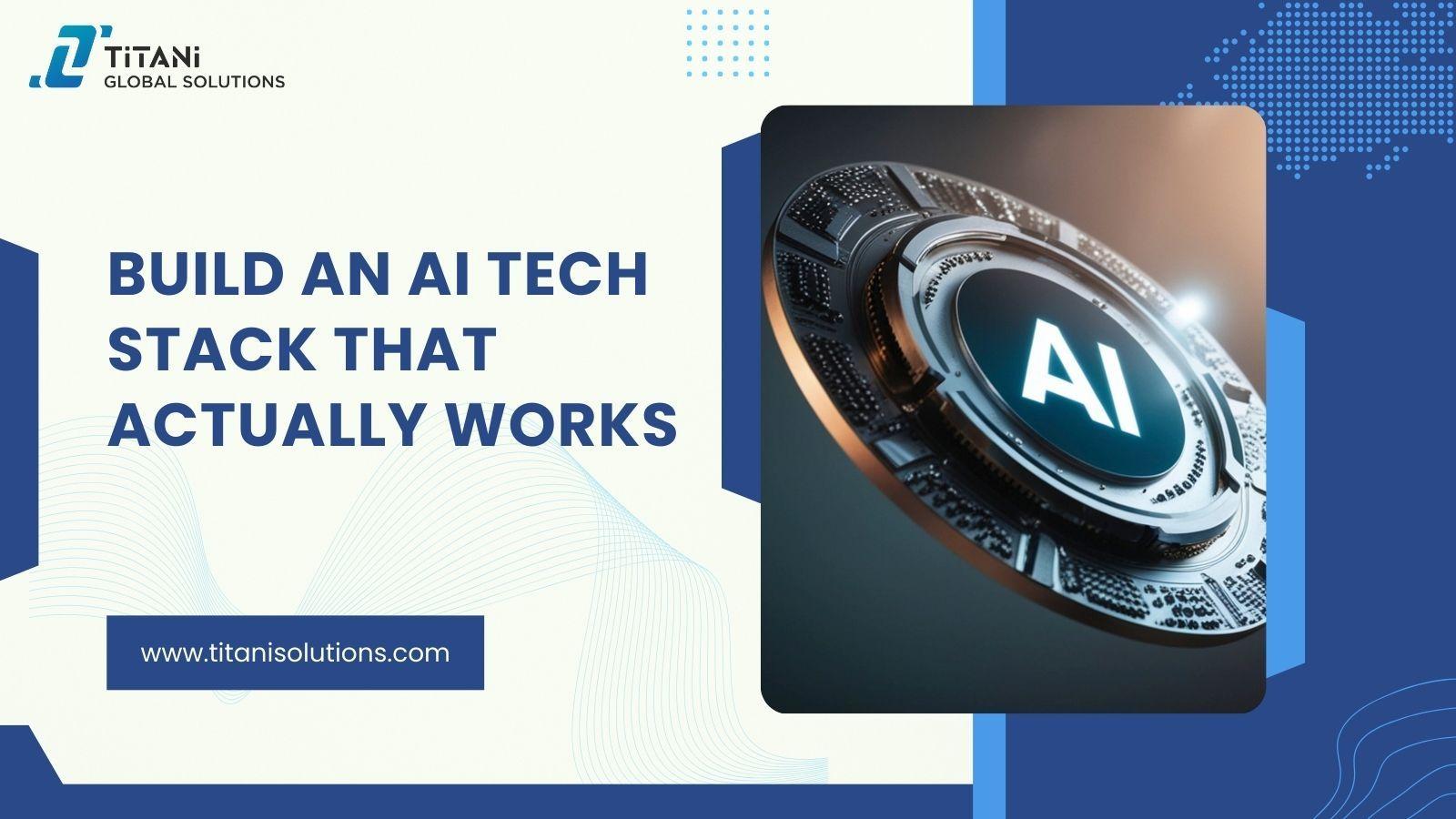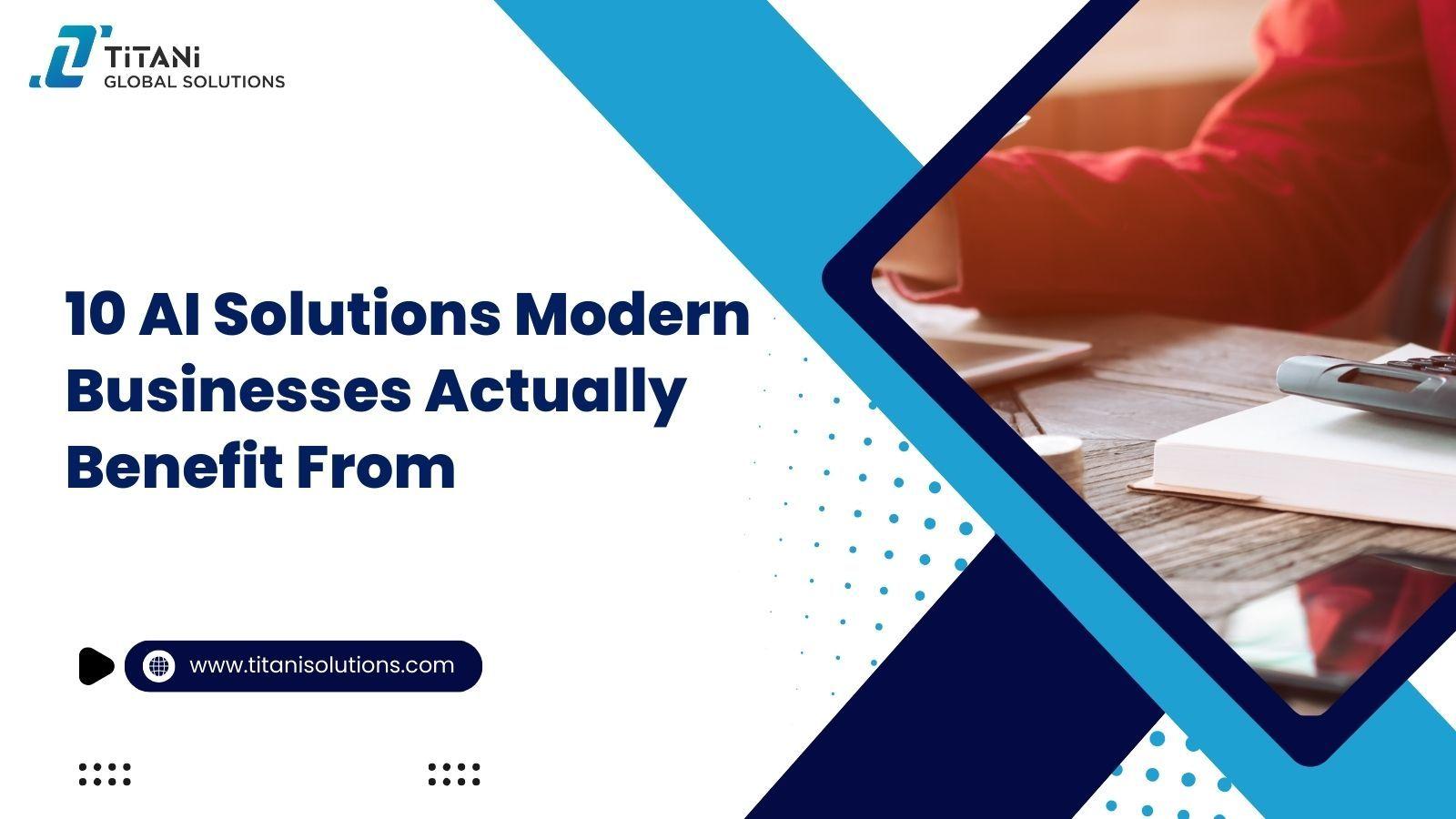Summary for Decision-Makers
In 2025, QA teams face rising complexity and tighter deadlines. Manual QA remains invaluable for usability, compliance, and exploratory testing, where human judgment and creativity are essential. Yet, it is slow, resource-heavy, and hard to scale for today’s enterprise demands.
AI-powered testing brings speed, automation, and scalability, excelling in regression, load, and large-scale validations. With self-healing scripts and intelligent test generation, AI reduces maintenance and accelerates delivery. However, it lacks the contextual understanding and UX sensitivity of human testers.
The smart takeaway: there’s no single “winner.” A hybrid QA model—combining AI’s efficiency with manual insight—delivers the best results. Enterprises adopting this balance gain faster release cycles, stronger coverage, and more resilient software quality.

As software systems grow more complex and user expectations rise, quality assurance is under more pressure than ever. Manual QA testers have traditionally handled this task. They use human intuition and hands-on testing to spot bugs, check workflows, and ensure a smooth user experience. Their role is critical, especially in detecting usability issues that machines often overlook.
However, manual QA often takes time, consumes significant resources, and doesn’t scale well in fast-paced development settings. That’s where AI-powered testing enters the scene. AI tools use machine learning and automation to streamline repetitive tasks, improve test coverage, and adapt quickly to changes. AI tools work alongside human testers to enhance their efforts, not to take over their jobs.
This article explores how AI-powered testing compares to manual QA. We’ll outline the strengths, limitations, and key use cases for each approach. In many cases, combining both methods leads to more resilient and effective quality assurance strategies.
The Growing Challenges in Modern QA
Quality expectations are higher than ever. Fintech platforms must ensure flawless transactions and maintain consistent uptime. Meanwhile, e-commerce sites need to handle heavy traffic loads and process payments securely. Integrating QA into every phase is critical for improved user experience, comprehensive test coverage, and quicker time to market.
Manual QA often faces limitations when attempting to meet these demands. Testing experts warn that traditional manual testing is time-consuming and error-prone. Testers simply can’t manually cover all scenarios in today’s complex codebases. Regression suites grow unwieldy, and deadlines slip when testers create and run everything by hand.
Manual QA: Pros, Cons & Use Cases
Human testers still play a vital role. Manual QA brings unique strengths: critical thinking, creativity, and a user-focused perspective. Experienced testers can spot subtle UI/UX or interface issues that automated scripts won’t catch. Human testers also validate compliance and business logic, using judgment to ensure workflows truly match real-world needs.
However, manual testing still has significant limitations. It often requires substantial effort and does not scale well for complex software systems.
A 2023 research paper on manual QA optimization identified key challenges. These include repetitive tasks, lack of consistent standards, and delays in feedback, especially in large projects.
As a result, many organizations now follow a hybrid QA approach. Only around 5% rely entirely on automation. In contrast, 73% aim for a balanced strategy, typically a 50:50 mix of manual and automated testing.
In real-world scenarios, manual testing remains useful for specific tasks. These tasks include early-stage testing, one-time validations, and legal or compliance checks. Manual testers are especially valuable in these cases, where human judgment is essential to ensure accuracy and usability.
AI-Powered Testing: What It Brings to the Table
AI-based QA tools dramatically boost efficiency. Modern AI test platforms can automatically generate large test suites from requirements or code. This automation reduces the manual effort required to create test cases, resulting in faster and more consistent test development.
They also analyse user stories and technical specifications to cover edge cases that busy engineers might overlook. This improves both test coverage and consistency.
Machine-learning algorithms go a step further by examining code changes and historical defect data. These tools prioritize critical test cases, allowing teams to focus their efforts on the most risk-prone areas.
Finally, AI’s self-healing capabilities reduce ongoing maintenance. By detecting UI changes and updating tests instantly, these tools avoid the frequent script breakdowns that manual testers often face.
Generative AI takes this further. Titani’s QA team notes that generative models “automate test script creation and generate synthetic test data.” In practice, this means you can feed a plain-English description into an AI testing tool and have it build detailed test scenarios and data automatically. This not only speeds up the onboarding of new tests, but it lets non-technical stakeholders contribute to QA by describing expected behavior in natural language.
These enhancements translate to higher accuracy and earlier bug detection. Titani Global Solutions highlights that AI-powered QA is essential for catching defects early, minimizing crashes and malfunctions that could damage your reputation. By automating repetitive checks and learning from each test cycle, AI systems continuously improve over time, reducing human error and freeing up QA teams to focus on strategy and quality.
To help clarify the strengths and trade-offs of each approach, the following table offers a side-by-side comparison:
Criteria | Manual QA | AI-Powered Testing |
Execution Speed | Slow, depends on available manpower | Fast, handles thousands of test cases in minutes |
Accuracy | Subject to human error | High accuracy, continuously improves using data and feedback loops |
Scalability | Limited – hard to scale with large, complex systems | Highly scalable – ideal for enterprise-scale and high-frequency testing |
Long-term Cost | Labor-intensive and costly over time | Higher upfront cost, but significant long-term ROI |
Suitability for Repetitive Tests | Inefficient – time-consuming and error-prone | Highly efficient – perfect for regression and CI/CD pipelines |
Contextual & UX Understanding | Excellent – human testers notice subtle UX/accessibility issues | Limited – struggles with non-explicit or subjective aspects |
Adaptability to Change | Flexible – quick response to changing specs | Requires re-training or reconfiguration for major changes |
Best Use Cases | Exploratory testing, compliance checks, usability review | Automated regression, load testing, API testing, large-scale validations |
Real-World Comparisons: When AI Outperformed Manual QA
In practice, intelligent automation has already outperformed manual methods in many scenarios. For example, Titani’s AI Chatbot project handles complex customer queries by extracting information from thousands of documents. The bot was trained on DOCX and PDF files and now provides precise, instant answers to user questions. Achieving that manually (having humans read and search documents in real time) would be prohibitively slow and expensive. The AI solution not only streamlined data retrieval but also learns from user feedback to improve, a level of continuous enhancement that manual processes can’t match.
Likewise, consider content moderation. Titani built an NSFW image classifier to automatically flag inappropriate content. Manual moderation of visual content is famously inefficient and costly. AI detection tools, by contrast, can scan images in real-time. They filter out NSFW content continuously without exposing human moderators to harmful material. This not only cuts moderation costs dramatically but also keeps humans out of harm’s way.
These case studies illustrate a key point: when a task involves large volumes of data or straightforward decisions, AI can far outpace manual QA in both speed and consistency.
So, Which Wins? – A Decision Framework
Rather than a one-size-fits-all winner, the choice depends on your needs. Consider factors like test frequency, stability of requirements, and the nature of what you’re testing. Generally:
Test Frequency and Scope: Manual is OK for one-off or exploratory tests. AI shines in repetitive, high-volume test suites.
Requirements Stability: Manual adapts better when specs are volatile. AI excels when features are stable and well-defined.
Human Judgment Needs: Manual wins where UX, accessibility, or nuanced evaluation is needed. AI wins where logic is deterministic.
Resources & Time Horizon: AI offers better ROI for long-term, scalable systems. Manual is quicker to implement for short-term or low-volume tasks.
Ultimately, a hybrid approach is best, combining AI efficiency with human insight for smarter, more resilient QA.
Conclusion
AI-powered testing is not a silver bullet, but a powerful assistant. It wins on efficiency and scale, while manual QA wins on human insight and flexibility. For fintech and e-commerce teams, the smart path is to blend both: leverage AI QA tools for routine, data-heavy tasks and keep manual testing for strategic, user-focused scenarios.
Titani Global Solutions has applied this balanced approach with success. Our own AI testing services – demonstrated in case studies like the AI chatbot and NSFW classification projects – show how AI can reduce QA cycles and catch hard-to-find issues.
If you’re a CTO or QA leader seeking to modernize your QA, we invite you to learn more about these solutions. Get in touch for a demo of Titani’s AI testing platform and see firsthand how we can help accelerate your quality assurance while maintaining the highest standards.



